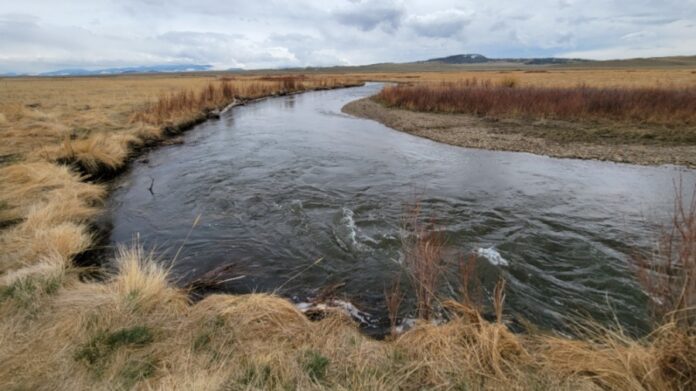Written By: Hans Ziegler and Chip Swanson, Breckenridge Outfitters
All photos by Breckenridge Outfitters
Trying to fish high and off-color water during the spring runoff in May or June can be a frustrating experience that drives a lot of anglers off the river. While conditions during these months are often less than ideal, there are strategies for dealing with runoff that can keep you on the water with some success, even during peak flows. We provide three of our favorite tips below. Please keep safety in mind while attempting to wade swollen rivers, and be sure to use a wading belt and a staff, since even small changes in current can result in significantly increased risk.
1. Focus on Softer Water Along the Edges
Increased flows greatly reduce the amount of potential holding water–squeezing most trout into the few remaining bits of softer water along the banks–so you should focus on fishing these quieter margins. Not only will that allow you to cover more water in a day, but you’ll also have a chance to encounter larger, warier fish that have been temporarily pushed out of the deep, inaccessible areas where they spend most of the year.

2. Use Flashier, Heavier Point Flies
Since high water is usually off-color as well, try adding some extra flash to your nymphs to make them stand out better. You can also try attracting attention by nymphing with a brightly-colored point fly with a larger profile–such as a leech or worm–trailed by a smaller and more naturally-colored mayfly or caddis nymph.
Also, remember to add more weight in order to keep your flies down in the stronger current. Using more or larger split shot will work, but using flies that incorporate heavier tungsten beads or lead wire wraps is often a more effective way to keep your nymphs riding in the strike zone. Streamers can be a great option in these conditions as well, especially when fished from a boat.

3. Focus on Other Options
If you are not willing or able to battle the high water of freestone rivers, there are a few alternatives to consider. The most popular is to seek out a tailwater below a bottom-release dam that regulates both flow and water clarity. Be prepared to deal with crowds if you take this option, which can be particularly intense during runoff when other options are limited.
Still waters are another option, although many of the high-alpine trout lakes here in Colorado are still inaccessible in May and early June due to remaining snowpack. Warm water reservoirs at lower elevations are filling up and turning over during this time, which can make them an appealing substitute until the runoff calms down enough to get back to freestone trout streams.
Hans Ziegler and Chip Swanson guide for Breckenridge Outfitters in Breckenridge, Colorado.
Credit: Source link






























